"Some of the
best bizarre
film commentary
going... with sharp,
no-nonsense
verdicts."
Manohla Dargis,
The Village Voice
"One of the few
review zines you
can actually read
and learn from...
You need this."
Joe Bob Briggs
"Shock Cinema
is like riding the
A train in the
summer from the
George
Washington
Bridge to the
Deuce to see
"Bucktown."
This is the only
magazine I can
totally relate to."
William Lustig,
director of
MANIAC and
UNCLE SAM
|
|---|
Need more info?
E-mail us at:
shockcin@aol.com
|

by Chris Poggiali - Temple of Schlock
[Reprinted from SHOCK CINEMA #14 - Spring 1999]
"Not everyone knows my name," veteran actor Paul Koslo admits, "but they all recognize my face. It's incredible. I can be in Russia and people will still come up to me and say" -- he slips into a Russian accent -- "You are the man on the television!"
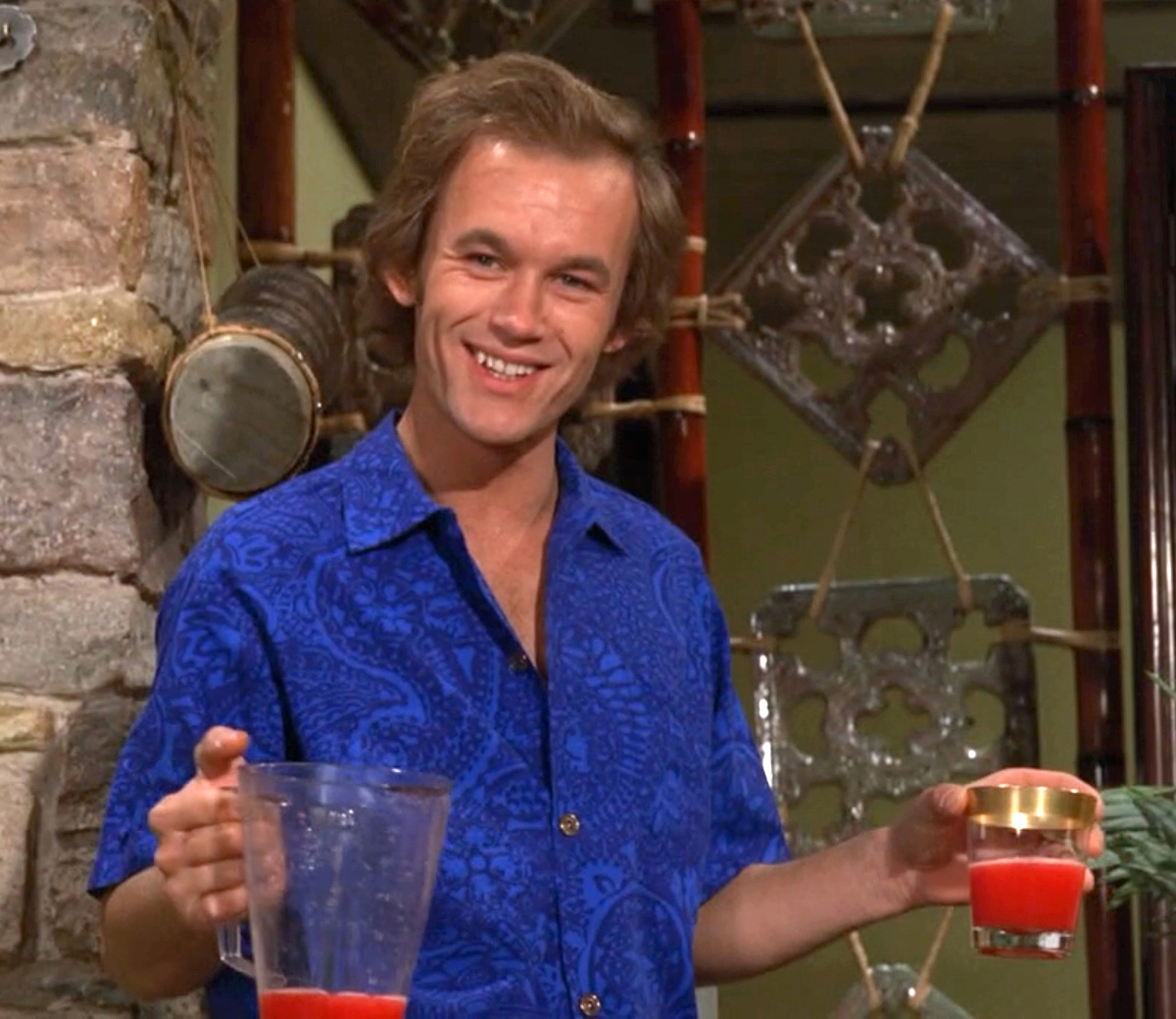 He certainly is. During the 1970s and '80s, it was a rare moment indeed when you turned on the TV and didn't see Koslo in one thing or another -- from guest spots on shows such as MISSION: IMPOSSIBLE, GUNSMOKE, THE ROCKFORD FILES, CHiPs, and THE A-TEAM, to supporting gigs in made-for-TV movies and miniseries like THE SACKETTS (1979), THE GLITTER DOME (1984) and ROOTS: THE NEXT GENERATION (1979). He's been all over the big screen as well, turning up in everything from the existential car chase film VANISHING POINT (1971) and the Disney comedy SCANDALOUS JOHN (1971) to the bikers-in-'Nam classic THE LOSERS (1970). Frequently cast as psychos and lowlifes, Koslo was the bad guy in three Charles Bronson movies, and has also played the villain against such Hollywood legends as John Wayne, Clint Eastwood and Paul Newman. He was beaten to a pulp in FREEBIE AND THE BEAN (1974), ground up into scrap metal in CLEOPATRA JONES (1973), and driven through a storefront window in THE STONE KILLER (1973) -- just a few of the many unforgettable moments that have earned him a place in the SHOCK CINEMA Hall of Fame. He certainly is. During the 1970s and '80s, it was a rare moment indeed when you turned on the TV and didn't see Koslo in one thing or another -- from guest spots on shows such as MISSION: IMPOSSIBLE, GUNSMOKE, THE ROCKFORD FILES, CHiPs, and THE A-TEAM, to supporting gigs in made-for-TV movies and miniseries like THE SACKETTS (1979), THE GLITTER DOME (1984) and ROOTS: THE NEXT GENERATION (1979). He's been all over the big screen as well, turning up in everything from the existential car chase film VANISHING POINT (1971) and the Disney comedy SCANDALOUS JOHN (1971) to the bikers-in-'Nam classic THE LOSERS (1970). Frequently cast as psychos and lowlifes, Koslo was the bad guy in three Charles Bronson movies, and has also played the villain against such Hollywood legends as John Wayne, Clint Eastwood and Paul Newman. He was beaten to a pulp in FREEBIE AND THE BEAN (1974), ground up into scrap metal in CLEOPATRA JONES (1973), and driven through a storefront window in THE STONE KILLER (1973) -- just a few of the many unforgettable moments that have earned him a place in the SHOCK CINEMA Hall of Fame.
He was born Manfred Koslowski in Germany in 1944, to Polish and Russian parents, and his family emigrated to Canada when he was six years old. "I had a very strict upbringing -- strict to the point of mental and physical abuse from my father, who had been a Prussian soldier," Koslo reveals. "He was a very strict disciplinarian and a real control freak, and we didn't see eye-to-eye at all. I left home just before I turned 13, because he tried to kill me one night with a knife. My mom got between us and took the knife out of his hand, but he started beating the crap out of me instead. So I left home, and I never went back."
Barely in his teens, Koslo took a job fighting forest fires in British Columbia -- "where they have 15- or 20,000 men fighting those big fires sometimes" -- and worked three months on one blaze alone. Afterward, he hitchhiked across North America twice with the money he earned from firefighting.
He worked a few jobs in Vancouver, finished high school, and was awarded a scholarship through the Ford Foundation to study acting at the prestigious National Theatre School in Montreal. The name change came next. "In the early '60s, it wasn't fashionable to have a weird name," he says with a laugh, "so I dropped the second half of 'Koslowski' and took 'Paul' as my first name."
It's now thirty-five years later, and even though his name doesn't turn up nearly as often as it did during the '70s and '80s, Koslo is still as busy as ever. In addition to his recent movie and TV roles, the actor has produced, directed, and/or appeared in a number of stage productions for the MET Theater in Hollywood, which he owns with actors James Gammon and Timothy Scott. He also owns and operates the landmark Lake Hughes Trading Post and Rock Hotel in Lake Hughes, California. Luckily for us at SHOCK CINEMA, he was gracious enough to spend a few hours discussing his exciting life and career.
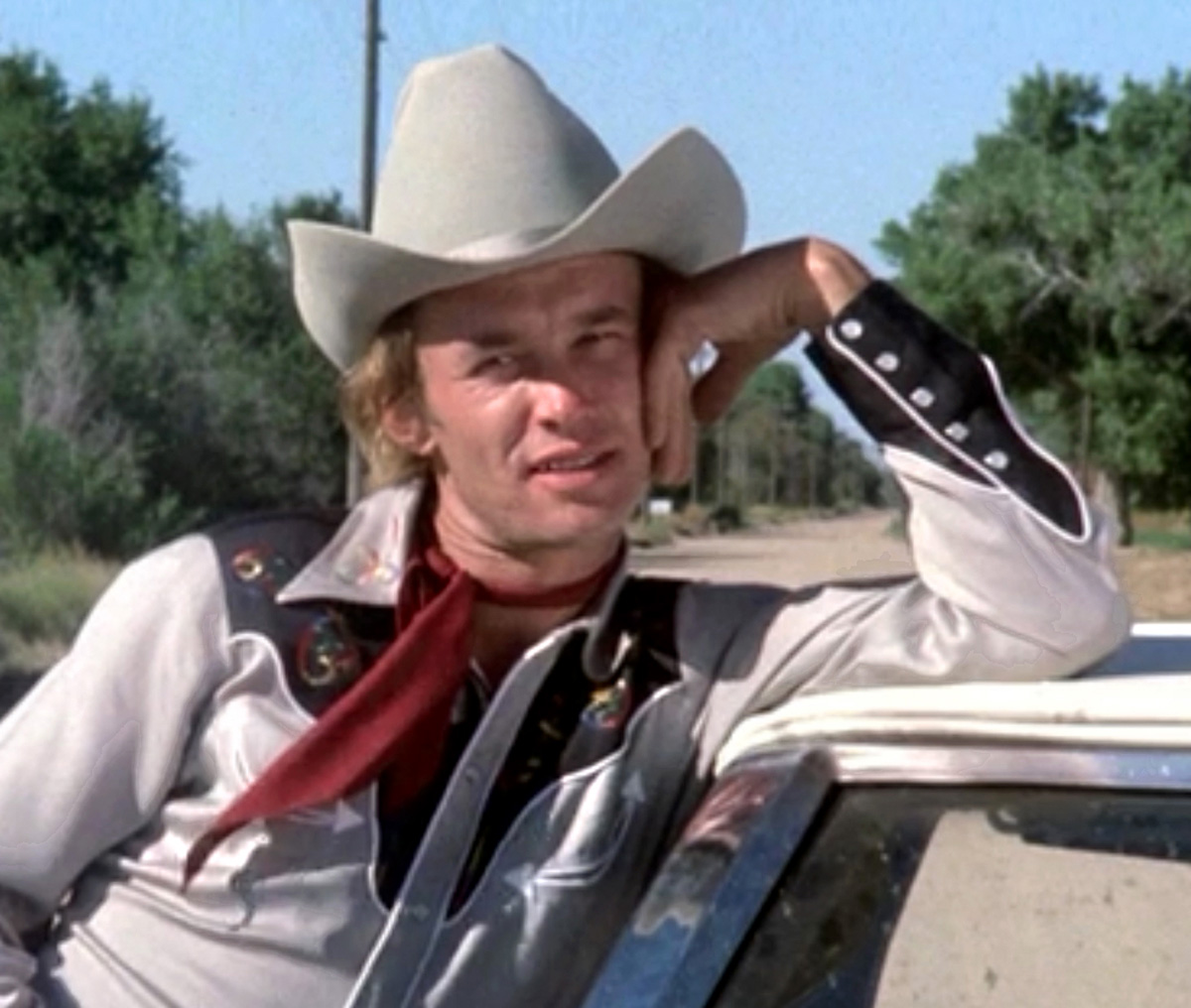 SHOCK CINEMA: What inspired you to become an actor? SHOCK CINEMA: What inspired you to become an actor?
Paul Koslo: As a kid, I used to play act and put on shows with my friends, like most kids tend to do. When I was seven, I discovered a Tarzan movie starring Gordon Scott, and I instantly related to it. The dreams I was having, the playacting -- what was going on inside my head was up there on the screen. That movie really made a big impression on me. In fact, four or five years ago, I ran into Gordon Scott at a restaurant in Santa Monica. A mutual friend introduced us, and I told him that story -- that I had become an actor because of him -- and he hugged me and cried. It was quite a moving moment, very touching and poignant for both of us. He was really a total gentleman.
SC: How did you make the leap from student acting to professional acting?
Koslo: Lady Luck reared her beautiful head one day. I was walking across the parking lot of the CBC [the Canadian Broadcasting Corporation] when four guys in suits saw me, and one of them said, "Hey you! You look Russian! Can you act?" I said "As a matter of fact, I just finished a season at Stratford with the National Theatre." So he said, "Be in my office at two o'clock. I want you to read for a part." It was Rodión Románovich Raskólnikov in CRIME AND PUNISHMENT ["The Murderer," (1966)], with Genevieve Bujold, and I got the part. It was a teleplay on video, a 2-1/2 hour show that played on PBS, and someone at the William Morris Agency saw it and signed me. So I went to Hollywood in 1966 -- and I've been here ever since. I was with William Morris, but because I was Canadian and didn't have another job lined up, I couldn't get a work permit. Late in 1967 I went to New York and auditioned for Hair, which was doing incredible business, and I replaced Gerry Ragni as Berger at the Biltmore Theater for about eight months.
SC: What can you tell me about your first movie, HOUSE OF ZODIAC (1969)?
Koslo: It had a couple of titles [including FLUX] and it was made by Jack Starrett and Richard Compton. Jack bet some guy from Vegas that he could make a two-hour, 35mm film for $15,000! He was one of those pug-nosed kind of guys in a bar in Vegas, and he said "You're full of shit. Nobody could do that." Jack said, "Gimme the damn money!" "All right!" So they got fifteen grand together, they got a script, and they shot this movie in six days, over three weekends. [laughs] Oh, it was quite a movie! It was about this guy in a Frank Lloyd Wright house in Hollywood somewhere who knows thirteen girls who represent the twelve signs of the zodiac -- Gemini being twins, right? -- and for different reasons, and through different relationships that he has with them, he decides that they're not fit for human life, so he does away with them. It didn't say much, and if you tried to figure it out, you wouldn't have the foggiest idea what it was all about, but it looked good and it sounded good. I don't think it ever got released, but it led me to my next film, which Jack also directed, called THE LOSERS.
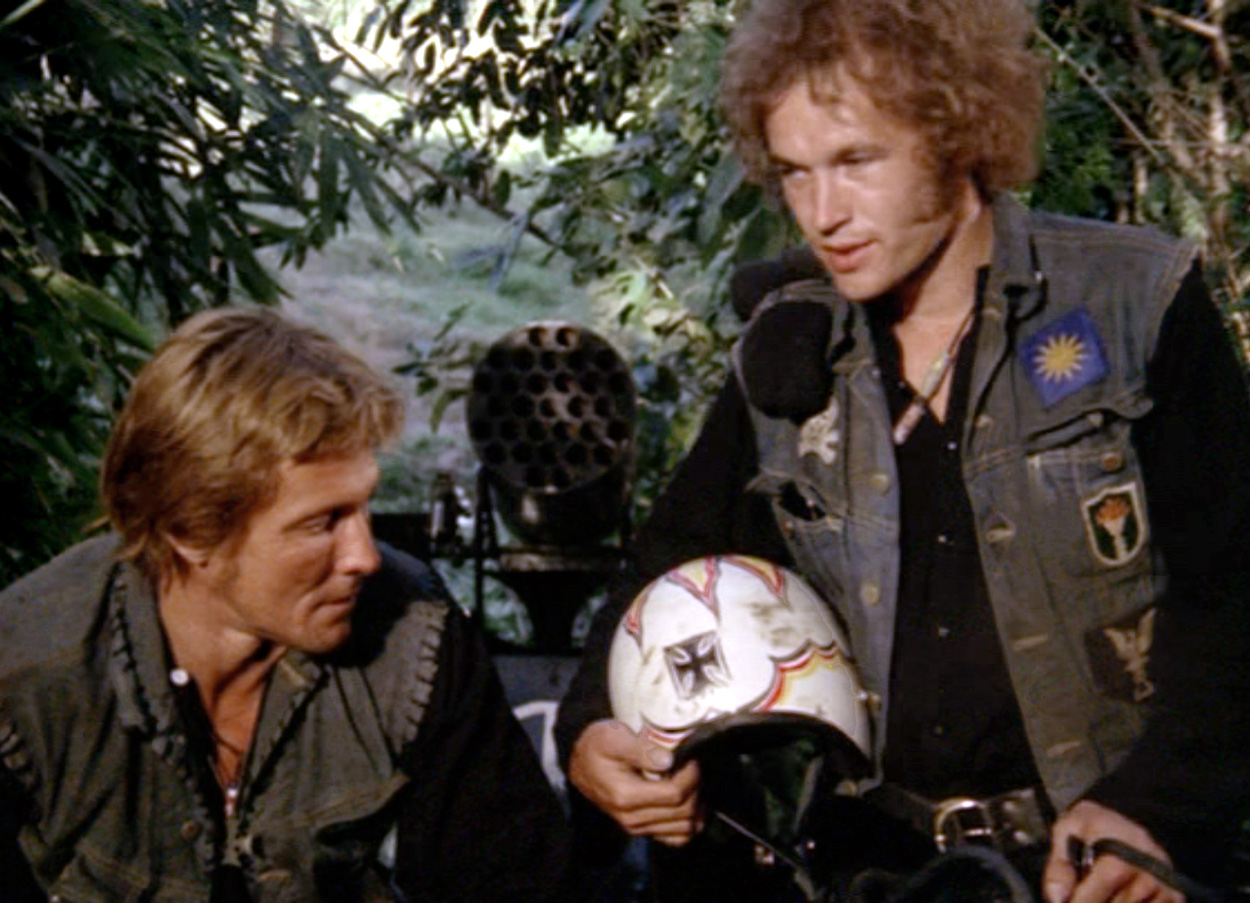 SC: Which must've been an amazing experience. SC: Which must've been an amazing experience.
Koslo: Oh, it was, believe me. [laughs] That was shot in the Philippines, and on our way over, we flew through a hurricane! The airplane did nosedives and fishtails and three-sixties in the air at 41,000 feet -- and it did that for something like 23,000 feet! We were all screaming and crying and pissing all over ourselves. Sections of the luggage compartment fell down on people, the luggage went everywhere. Bill Smith and I were sitting in first class, and his wife Michelle was next to him. We looked at each other, like "This is it, partner." At 18- or 19,000 feet, the pilot stopped it from spinning at least -- but it was going straight down! We were looking down at our feet, y'know? The plane was shaking and vibrating so much. The pilot pulled it out at about 11,000 feet -- and when we knew the plane was settling, there was a primal scream you could've heard back in New York. It brings tears to my eyes just thinking about it.
SC: Did things calm down once you got to the Philippines?
Koslo: Not really. [laughs] The Vice President of the Philippines was a guest of honor in the dining room of this club where we were staying in the Manila Hilton. One of the guys in our gang [Houston Savage] got drunk that night. He was a nice guy, but he had some problems, and when he got drunk there was a real mean streak. So we were all being introduced to the patrons who were there eating, and this actor got up and told everybody they were all a bunch of "slope-heads" and told them to go fuck themselves. The Vice President of the Philippines had his bodyguards take him out back, where they pulled out guns to blow his brains out right there. Jack and Bill and the hotel general manager had to go out there and plead for his life. Otherwise, that guy would've been dog food. Later, I heard he was killed in Georgia, shotgunned by somebody in a drive-by, I think. The people in the Philippines were incredible, though. Very nice people. I had a great time there.
SC: I really like Jack Starrett's movies. I think he's a very underrated director. What was it like working with him?
Koslo: Jack lived life to its fullest. I think his first name was Jack because of Jack Daniels. [laughs] I think in another life he said, "I want my first name to be Jack, because I love Jack Daniels." A wonderful director, and he knew how to talk with actors, because he was an actor himself, and he went the extra mile to get what he needed. After shooting three weeks on a five-week shoot, he said, "Guys, I just found out that I haven't been paid the past three weeks." So we all called our agents in Hollywood, and sure enough, they hadn't received the checks either. The producer, Joe Solomon, was the last of the schlockmeisters. He was on the set, and he said, "No, there must be a mistake. We sent the checks." Of course, he hadn't, and Jack said, "Guess what, boys? We're not gonna go back to work!" Well, 48 hours later we all had cash, so we finished the picture. [laughs] Solomon was the epitome of the Hollywood producer who's gonna fuck you any way he can. He got a wonderful picture for his money, too. THE LOSERS did really well for him. Without Jack, I don't think that picture would've made it.
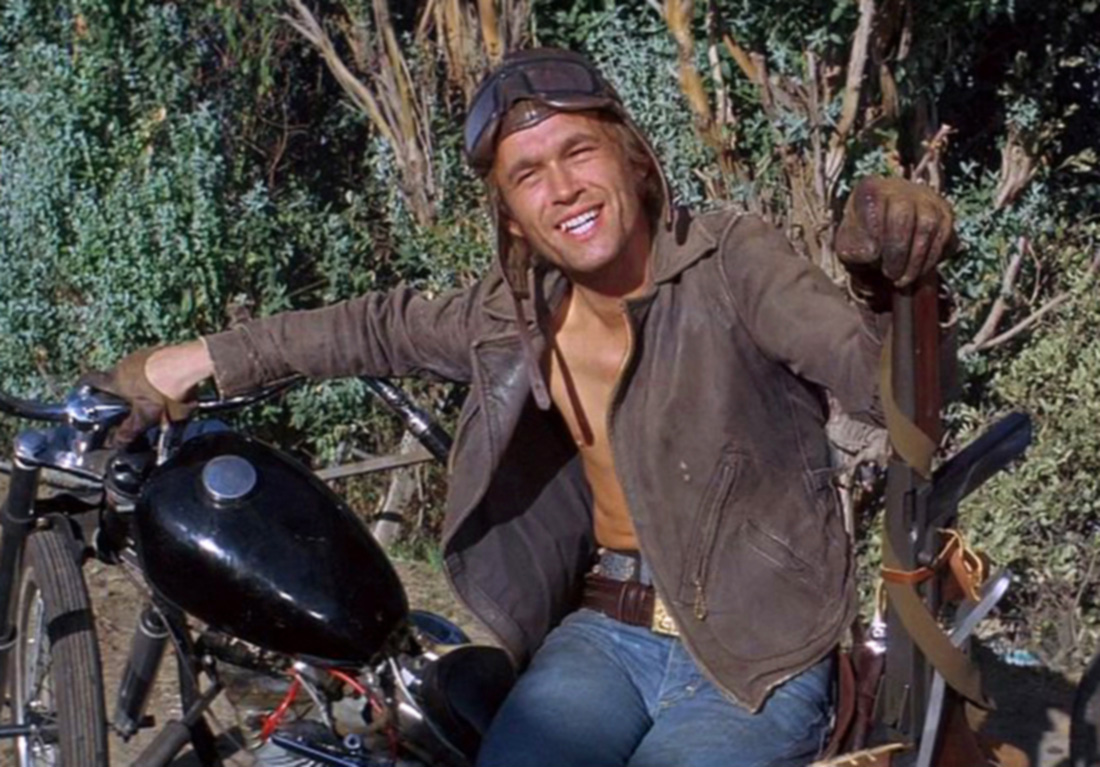 SC: Was your next movie VANISHING POINT or THE OMEGA MAN (1971)? SC: Was your next movie VANISHING POINT or THE OMEGA MAN (1971)?
Koslo: I went right from THE LOSERS to THE OMEGA MAN. What happened was, that guy Solomon -- he never paid us any overtime for THE LOSERS. Instead of doing a 12-hour day, which is in the SAG contracts, we were doing 16, 18, sometimes 20 hours a day because we were shooting in the jungle. We had about a 3-1/2 hour drive to get to the location outside Manila, so we had these long days and all this overtime -- and Solomon wasn't going to pay any of it. Lo and behold, as fate would have it, Charlton Heston was the lead in THE OMEGA MAN. I told him about this, and he got everybody their overtime pay! I think we made more money on that low-budget movie that we did for nothing than we made on our salary! Of course, it wasn't that good of an experience working with Charlton Heston. [laughs] He was so big at the time, and so busy, that I had to do my close-ups opposite a mophead that the script lady held up where his head would be! I did my close-ups with a mop because Heston was talking to the President or somebody on his portable phone! But he went to bat for me with Solomon, and I really respect him for that.
SC: I heard that there was some trouble between Heston and his costar, Rosalind Cash, on that film.
Koslo: There was a lot of tension between them, yeah. No real trouble, just artistic differences. Rosalind was a very nice lady -- a very opinionated lady -- and extremely concerned about the image of African-American women on screen. But it was Heston's show. Boris Sagal, the director, had to take her aside a few times. It all worked out in the end. Heston was really nice to me, and I worked with him again years later on another picture, SOLAR CRISIS (1990), which was a big $80 million dollar Japanese-funded film that nobody's heard of. You gotta give Heston credit -- he sticks by his guns. Whatever his politics are, you gotta admire a guy who sticks by his guns.
SC: When I was in high school, I thought VANISHING POINT was the greatest movie ever made.
Koslo: Yeah, that's a real cult film. It still plays at a theatre in Paris, as I understand. Isn't that incredible? After all these years. Cleavon Little, who played the d.j. -- he was a wonderful guy, and a great actor, too. Richard Sarafian's another renegade director. In fact, he also made that movie I just mentioned, SOLAR CRISIS. Guys like Starrett and Sarafian, even though they did good pictures with great people in them, they never really became big studio directors. They were just one-of-a-kind guys who didn't want to put up with all that shit.
SC: I watched VANISHING POINT again recently, and the stunt driving sequences are still fresh and exciting after nearly thirty years.
Koslo: That was Cary Loftin driving. People say he was one of the greatest drivers to ever get behind the wheel of a car. As a matter of fact, I just did a movie with Van Damme, and some of the guys on the set were talking about Cary. He died a few years ago, but he lived well into his 80s. /B>VANISHING POINT was one of the first movies where you needed all these cars -- they're all the same car, basically -- but there are seven or eight of them because they keep breaking down. You need Challenger #1, #2, #3, and so on. One night coming home from location, Cary was driving one of the Challengers back to the hotel, and he passed some New Mexico state troopers going 145 miles an hour! [laughs] He had four or five cop cars behind him with their lights on, but they couldn't catch up because they could only go about 125! So he drove into this little town and started to shut the car down. He pulled into a gas station, and I swear to God, he did a 360 in between the pumps and put the rear of the car -- the gas tank -- right in front of the super pump! He got out of the car like nothing happened, and the troopers busted his ass right there! [laughs] Oh, you should've seen those cops! They were fuming! They took him in, and the producer had to explain to them that Cary had actually been testing the car -- that he did a lot of these spinouts because he'd been having trouble with the car! [laughs] I mean, you do have to test the cars, but you don't do it while you're driving home!
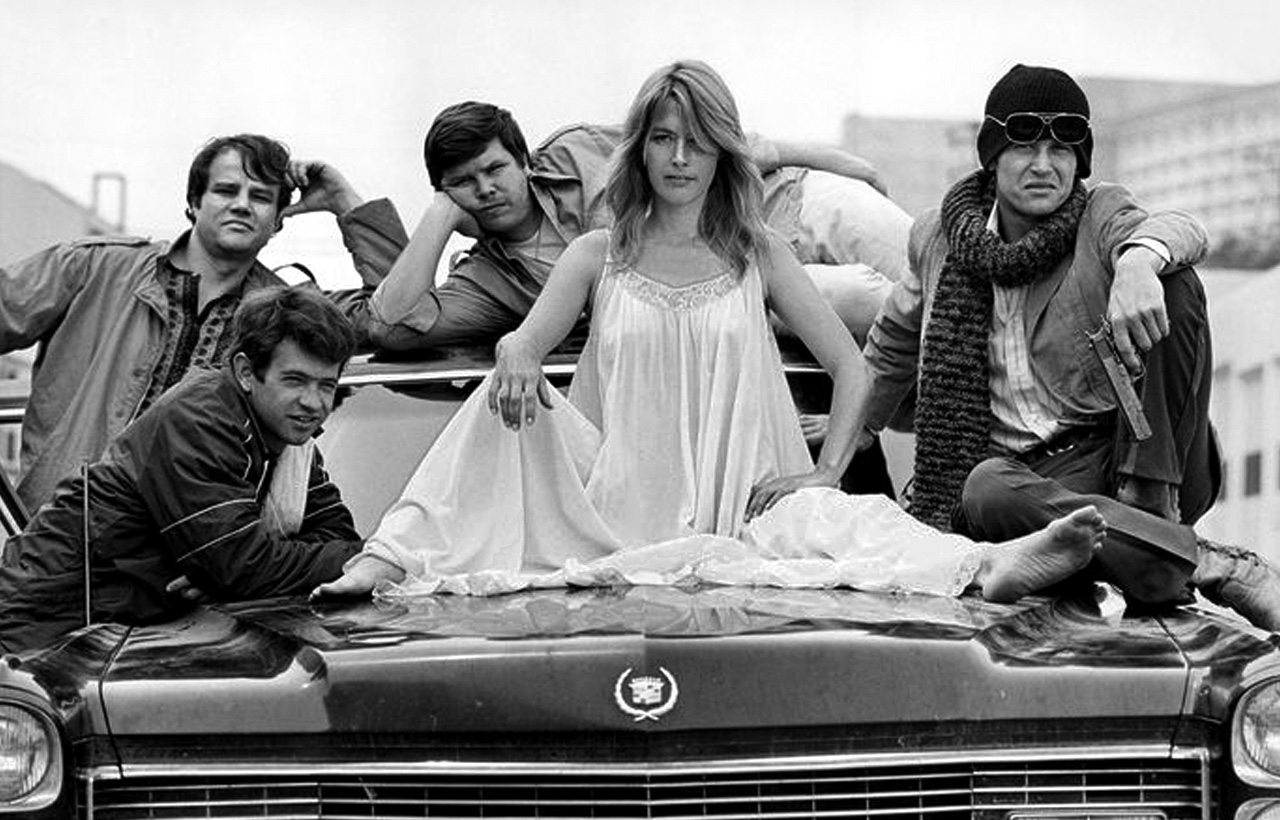 SC: I've never seen WELCOME HOME, SOLDIER BOYS (1971). How is that? SC: I've never seen WELCOME HOME, SOLDIER BOYS (1971). How is that?
Koslo: That's a very good picture that never got much play in this country. It's about four Green Berets who come back from Vietnam and don't get the "welcome home" they were expecting. A cop forces our hand, so we kill him, and then the townspeople start shooting at us until we finally revert back to what we were overseas: killing machines. We wipe out the entire town -- 95 men, women, and children -- and the army has to come in and finish us off. Joe Don Baker was great to work with, and so was the rest of the cast -- Alan Vint, Tim Scott, Jennifer Billingsley, Billy "Green" Bush. Richard Compton is a wonderful director, and a great guy, too.
SC: You made another movie with Compton a few years later that was called MANIAC (1977).
Koslo: I think it was originally called MANIAC, but then they changed it to THE RANSOM [also ASSAULT ON PARADISE and NIGHT HUNTER]. Oliver Reed was in that. Now there's a guy for you! He would come to work on the first day knowing everybody's dialogue in the whole script! And for lunch, he would have -- you know those big brandy glasses that are as big as fishbowls? They're ten inches tall, eight inches across? He would have one of those full of gin! [laughs] He must have two hollow legs, 'cause he would drink all day and all night and be steady as a rock.
SC: That same year, you were also in TOMORROW NEVER COMES (1978) with him.
Koslo: That was the only movie I ever got fired from. Susan George and I were doing a scene on the river in Montreal. The camera was three hundred feet or so away, so we'd shoot the scene and they'd never yell cut. Susan was wearing nothing but a negligee, and it was cold out, like 30 degrees. She didn't have a robe -- we couldn't hide a robe nearby, because of the way the shot was set up -- and there was nobody to get one to her. Susan's a real professional. She worked like that for an hour, until she got so cold she started crying. And they still wouldn't get her a robe. They wouldn't even talk to us. I finally said, "Get her a goddamn robe NOW!" and the director, Peter Collinson -- this hothead English guy -- he fired me right on the spot. I called my agent immediately to protect myself. It was a frantic situation, because producers were talking and nobody knew what had happened. Luckily, I've been with the same agent for 26 years now, which is a movie in itself. Nobody stays with the same agent for more than six months around here. Anyway, I told him what happened, and he said, "This is totally ludicrous." He called the producers, and they rehired me the next day. The only thing that made that experience great was Oliver Reed.
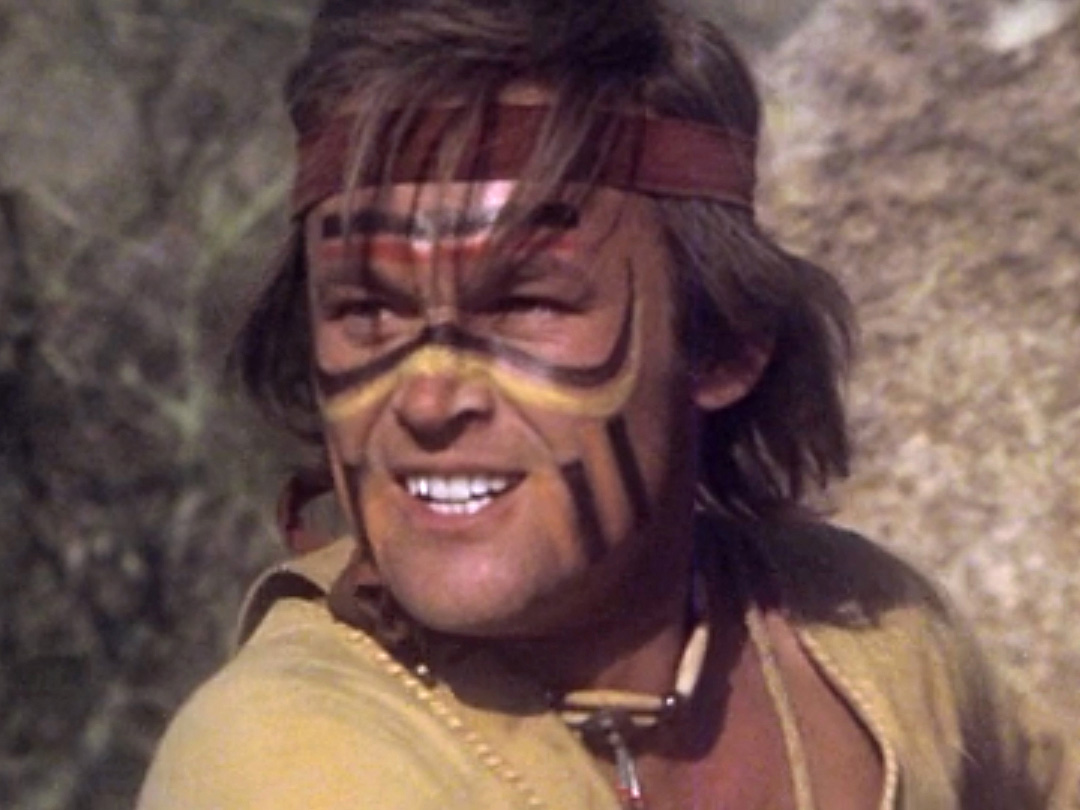 SC: I've heard some great stories about Oliver Reed. SC: I've heard some great stories about Oliver Reed.
Koslo: Well, I could tell you a few more! [laughs] I could spend hours talking about Oliver Reed. He would have dinner for us with wine, and each bottle of wine would cost anywhere from $600 to $1100 a bottle -- and he'd have seven or eight bottles. All night long, with brandy and champagne and six people serving. He'd get up on the table, in front of everybody, and do every character from Winnie the Pooh. It was unbelievable. He tried to throw me out the window of the Ritz Hotel in Montreal, just as a prank! I grabbed hold of him and almost took him with me, but his valet -- Sir Reggie, they called him -- he saved both of us. Sir Reggie was built like a warthog, and he was the only guy strong enough to get us both back into the building. Just total craziness. When I'd go to England, I would visit [Reed]. He lives in a gigantic monastery he had refurbished with 60 bedrooms. The first thing he would do is give you a big sharp knife so you could carve your name or initials into the dining room table, which was like 50 feet long. He's an unbelievable guy. I've never known anybody who was such a character, and yet so professional on top of that. He's one-of-a-kind.
SC: JOE KIDD (1972) is one of those movies -- like HEAVEN'S GATE (1980) and VOYAGE OF THE DAMNED (1976) -- where I'm tempted to go right down the cast list and ask you about everybody who was in it!
Koslo: Well, working with Bobby Duvall was interesting. [laughs] He can be a real hot pistol. We were shooting an interior scene at a warehouse in Tucson, and he'd been waiting all day to do this big scene. It was getting near the end of the day, and they started rushing him, and he just went into this incredible tirade, this monologue that went on for five minutes straight and ended with him shrieking "you stupid FUCK!" at the director [John Sturges]. But he has a great sense of humor, too. I remember one day, we were shooting up in Lone Pine, in central California, and it was cold and the wind was gusting like 60 to 80 miles an hour. I was with Bobby, Stroud the Cloud [Don Stroud], and James Wainwright, and the whole crew was there in front of us. We were all watching Clint do this shot, a nice easy shot riding through the sagebrush. The wind was blowing and blowing -- and all of a sudden, Bobby let out this fart that was so loud, the whole crew heard it -- and at the same time, the wind blew the hat off the guy in front of us! [laughs] It looked like Bobby's fart blew the guy's brains out! Everybody saw what happened, everybody fell on the ground laughing -- and of course the hat blew into the shot and ruined the shot. Clint looked over, like "What the hell's that about?"
 SC: You had a good time working with Clint Eastwood? SC: You had a good time working with Clint Eastwood?
Koslo: Oh yeah, Clint's a real class act. He has a great sense of humor also. The Cloud, Wainwright, and myself played the bad guys working for Duvall. Wainwright and the Cloud get killed off before I do, so I had another two or three weeks of work after they left. We were shooting in Tucson during the Super Bowl. I think Kansas City was playing, and I can't remember the other team. All of us bet against Clint, but the Cloud and Wainwright had to catch their plane before the end of the game. Clint was winning the bet big time, so they asked me to give him his money with a note. Clint and Bobby were at a table with Paul Newman -- he was shooting JUDGE ROY BEAN at the time -- Jacqueline Bisset, and some other people. They were all watching the game, and I walked in with the letter. I think there was $200 in it, and this note: "Dear Clint. We can't beat you in this movie, and we can't beat you at the Super Bowl, so we just wanted to tell you to go fuck yourself." [laughs] And y'know what? Clint just started laughing!
SC: CLEOPATRA JONES is one of my favorite movies. What do you remember most about the making of that movie?
Koslo: Shelley Winters and I didn't get along too well because Jack [Starrett] kept putting me in the shots with her. [laughs] She was always saying, "What's he doing?" -- meaning me -- and Jack finally said, "Shelley, goddammit, do what I'm asking you to do! Don't worry about him, worry about yourself!" So she was ticked at me. A few years later, I directed Sally Kirkland and Gary Sinise in Sam Shepard's Curse of the Starving Class, with James Gammon, who had originated the role in New York at the Public Theater about eight months earlier. Jimmy and I decided to do the West Coast premiere at the MET Theater. Sally was a protégé of Shelley's, so Shelley came out to see it, and she calmed down after she saw the show. Took her a few years, though.
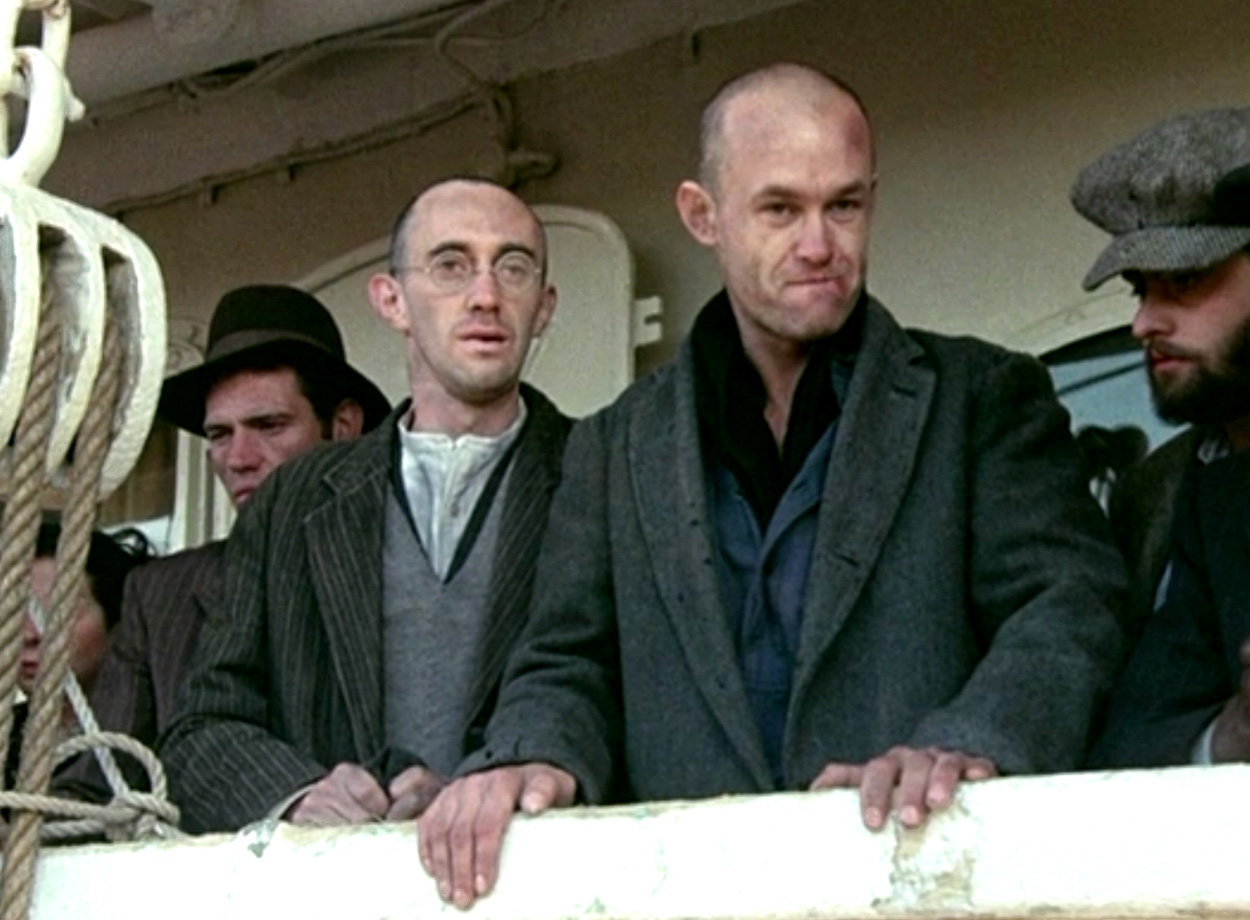 SC: Was it your idea to speak with a British accent in CLEOPATRA JONES, or was that in the script? SC: Was it your idea to speak with a British accent in CLEOPATRA JONES, or was that in the script?
Koslo: That was my idea, and I got the OK from Jack. The accent was another thing that got under Shelley's skin. The same thing happened to me with Faye Dunaway when we were making VOYAGE OF THE DAMNED. It's funny, but I've had a few run-ins with either directors or other actors because of my accents. You really have to stick up for what you believe in, without hurting anybody or pissing anyone off. German is my first language, so if Faye Dunaway doesn't like my accent... [laughs] I'm sorry, but it's totally authentic! I played a German guy in HEAVEN'S GATE, but I made him Prussian so the accent would be different than the one I used in VOYAGE OF THE DAMNED. I try to be original and immerse myself in the part as much as I can, without getting idiotic about it. I had never done an Irish accent before, but I just did an episode of WALKER, TEXAS RANGER that was about the IRA, and they had a couple of real Irish guys on the show who were very complimentary about my Irish accent. I pride myself on doing a pretty good accent, no matter what it is.
SC: You played a bad guy in three Charles Bronson movies. Did you get along well with him?
Koslo: We didn't get along at all on that first film, THE STONE KILLER. My first day on the set, I sat in his chair. The first joke I ever told him was "Hey, Charlie, did you hear the one about the Polish actor?" He said, "No, what?" I said, "Charles Buchinsky!" "Do you think that's funny?!" [laughs] Being Polish myself, I thought it was hilarious, but it went over like a lead balloon with Charlie. He's really Polish, that guy! You wouldn't believe the things that have happened between me and Charlie Bronson. I could tell you stories all day long. When we were doing MR. MAJESTYK (1974), he said, "Next to me, you're the best thing in this movie." Don't count on it, Charlie! But he apparently asked me back for the third movie, LOVE AND BULLETS (1979). I saw him a few times after that -- not by design, but by accident -- and he was cordial.
SC: Both JOE KIDD and MR. MAJESTYK were written by Elmore Leonard. Did you ever encounter him on the sets of those movies?
Koslo: Y'know, I did, and he was very pleasant, but he was preoccupied with the story point stuff -- like on MR. MAJESTYK, when Richard Fleischer [the director] changed the ending and let my character live because everyone was getting killed off. Even though we got to joke around, he was very odd and sort of an enigma. You couldn't really get close to the guy. But he was very pleasant, and he's certainly one hell of a writer.
 SC: Any stories about Al Lettieri? SC: Any stories about Al Lettieri?
Koslo: That's another guy I can talk about all night long! [laughs] Bill Smith, Oliver Reed, and Al Lettieri -- their names just jump right out at me. I first met Al on the set of MR. MAJESTYK. A bunch of us were working in a field in Colorado, near this long, straight gravel road that looked like it stretched into infinity. We looked down this road and saw a cloud of dust coming, getting closer and closer. Finally, the dust settled and this super-stretch limo pulled up. Charlie was down the road apiece, in the opposite direction, away from the limo, and I was in between the limo and Charlie. We didn't know who it was. We had just finished lunch, and Al Lettieri had been expected for three or four days. He didn't have a firm starting date, because they were behind schedule on the film he was shooting in England. Anyway, the limo comes to a stop, the driver opens the back door, and out comes this rhinoceros of a guy with pitch black curly hair, moustache, and big doe eyes! He says, "Uhhhh...where's the actors' dressing rooms?" Someone said, "Over there." Right behind him comes these two 20 year-old chicks with short-shorts and bra halters! He said, "Girls -- go get those guys, make them feel at home," and then he looked around and he said, "Hey, is that Charles Bronson over there?!" He walked up to Charlie and grabbed his left hand -- "Hey Charlie! Al Lettieri!" You remember MR. MAJESTYK, right? Charlie played a melon farmer? Well, Al put his right hand around Charlie's shoulder, squeezed him close and lifted him right off the ground, singing, "Won't you be my melon, Charlieee babyyy!" [laughs] He carried Charlie like that right down the road, past the limo, for about a block and a half! Charlie was totally bewildered -- and to to this day, nobody knows what they talked about. Al was a terrific guy.
 SC: You really took a beating in FREEBIE AND THE BEAN. SC: You really took a beating in FREEBIE AND THE BEAN.
Koslo: Yeah, I played Whitey. [laughs] "Get the pliers." Remember that? When Jimmy Caan and Alan Arkin interrogate me, they did that little scene about the pliers. I didn't know what they were talking about, because they just threw that in there! What am I gonna say -- "Hold it, guys, this isn't in the script?" Who am I to cut the scene? I just went along with it, and it really worked out well. Jimmy was setting the pliers, and my finger was in there already, so when he tried them out, he really squeezed my finger! [laughs] I said "Owww!" and he was like "Awww, did that hurt? Oh, well, awwww." That was real. He didn't want to stop the scene either.
SC: That was basically the same part you played in THE LAUGHING POLICEMAN (1973).
Koslo: Y'know what? I did those movies at the same time! They were both shot in San Francisco, and it just happened that the schedules worked out so I could do that. I'd be interrogated by Caan and Arkin, and then I'd go across town to be interrogated by Walter Matthau and Bruce Dern. [laughs] I thought Matthau and Dern were putting on an act for me. It seemed like they hated each other. Walter had a phobia about cleanliness. He was spraying Lysol all over the room, and Dern couldn't stand the smell of the stuff. It was like watching the original ODD COUPLE, but with Walter playing the Jack Lemmon part.
SC: BOOTLEGGERS (1974) also came out the same year, and that was one of your few starring roles.
Koslo: Yeah, I cut my teeth on that film. That was the second thing I starred in, after CRIME AND PUNISHMENT, but it was my first leading role in an American production. It didn't get any better than that for me, y'know? [laughs] I think I took myself a little too seriously in that film. Movies like that could make or break a guy early on, and even though it never made me and certainly didn't break me, I think I was a little too serious about the character. I was so deep in the forest, I couldn't see the trees. It worked, though, and I got some good reviews, but I think it could've been a better movie. It was Jaclyn Smith's first movie, and I got to work with Slim Pickens. This is how it was with Slim -- "Boys, I want you to meet my daughter, Easy Pickens! Easy, these are the boys!" [laughs] The director, Charles B. Pierce, also did THE LEGEND OF BOGGY CREEK, and that put him on the map. He ended up screwing me for my participation on BOOTLEGGERS. I had a real good deal on deferment, which was the new thing in the early '70s. That movie cost $300,000 and it made over $16 million. I had 2% of the gross, and I never saw any of it. That was heartbreaking. It wasn't a blockbuster, but it made a lot of money and it played for a long time. But that's show biz. You take your chances when you get up in the morning and do what you gotta do.
SC: I'm surprised we've gotten this far without mentioning John Wayne, since you played one of the bad guys in ROOSTER COGBURN (1975).
Koslo: He was a great guy. Very supportive. I had always enjoyed his work, and wanted to meet him -- and when I finally did, he surpassed my expectations, which was a pleasant surprise. I learned so much from watching him act with Katherine Hepburn. Acting seemed as easy for them as opening the water tap. The first time I met him was on the set, and the director [Stuart Millar] introduced us. It was the thrill of my life to meet him. He asked me, "What part are you playin', kid?" My character's name was Luke, so I said, "I'm playing Luke -- Luke the Duke." He said, "No, you're Luke the Puke! There's only one Duke around here, and don't you ever forget it!" [laughs] I was one of the few actors around who knew how to ride a horse really well, because I was living on a ranch and breeding Appaloosa horses. Wayne's kids were there, and I made a point of telling them that I could ride really well. That night, after the first day and that introduction, he came up to me in the hotel dining room and said, "Anybody my kids like can't be all bad. Put it there, kid!" And he shook my hand. I never realized he was so damn big. [laughs] That guy was big. I'm 6'-2", but I felt like a dwarf next to that guy.
 SC: The following year, you played another bad guy in THE DROWNING POOL (1975). SC: The following year, you played another bad guy in THE DROWNING POOL (1975).
Koslo: On my first day of work, I was on one of those hydroplanes riding around the swamp. There was a pilot running it, and a little seat behind him that two people could just barely fit on. Paul Newman was sitting down, and I was supposed to be sitting next to him, but he kept trying to push me off the seat! I really didn't know the guy, so it threw me off guard. "Is he fuckin' with me? Is he trying to be funny?" I didn't know how to react, and it went on like that all day. The next morning we were back in the same location, but instead of letting me sit down, he said, "Let me just stay on the seat, and you stay right THERE" -- and he tried to push me into the swamp! Well, I grabbed his arm and held it so tight, there was no way I was gonna go in alone! We almost went in, but at the last minute he grabbed the seat that we had been reluctantly sharing the day before and he saved us both. From then on, I could do no wrong. [laughs] He'd send a limo for me, he'd let me use his portable phone, he'd give me six-packs of those little cans of Coors. He had to test me first, y'know?
SC: At what point during the making of HEAVEN'S GATE did you realize it was going to be a disaster?
Koslo: When it took three weeks to shoot one-eighth of a page of script, and it was only one shot! I played the mayor of the town, and I had to be there for the whole shoot -- which was supposed to last 11 weeks, I think, but I wound up working 6-1/2 months on principal photography! I think [director] Michael Cimino just got carried away by self-indulgence and the headiness of winning the Oscar for THE DEER HUNTER just a couple of months prior. Kris Kristofferson and I had a scene together where I go into his room with some of the town merchants to wake him up, and he's in a drunken stupor. He pulls a whip out from under his pillow and cracks it at us, and we all retreat to the doorway. That's it. That's the whole scene. We had to do it 58 times with seven cameras running -- and then Cimino said to me, "Well, y'know, we're never gonna get it perfect." [laughs] That's when I knew we were all fucked.
SC: Do you prefer working on the big studio pictures, or the smaller independent films?
Koslo: For me, it's more important if everyone involved works together and gets along like a family unit. On big experiences like HEAVEN'S GATE and VOYAGE OF THE DAMNED -- big pictures that became legends, even though they didn't do well -- I got along well with some of the greatest people in the movies, like Orson Welles, and I'll always cherish that. The Duke gave me a coffee mug with a 24-karat gold rim that says "To Paul, from the Duke. ROOSTER COGBURN." It's the little things you'll never forget. I'm proud of some of the work I did on television, like ROOTS: THE NEXT GENERATION and CONAGHER. THE LOSERS was a small picture, and that was a great experience, but some of the bigger movies didn't feel right. LOOSE CANNONS (1990) was like that. A fairly large budget, big actors, but it just didn't feel like a family unit. Gene Hackman is a wonderful guy, though. He's very easygoing and loose, very complimentary, and he sticks up for you. I didn't get along with Bob Clark, the director, and Hackman got behind me on that. It isn't often that you see guys take time out from their own world and their own career to stick up for another actor -- but he did that for me. Little things like that can make a bad experience great.
SC: Looking over your filmography, one can see that you've worked more than once with a number of directors. You obviously had good working relationships with them.
Koslo: Sure, guys like Starrett, Sarafian, Compton -- I did four movies with Stuart Rosenberg. It's very rare that I don't get along with a director.
SC: Did you enjoy working with Stuart Gordon on ROBOT JOX (1989)?
Koslo: He's an incredible director, and a strong theatre person, too. He cowrote Bleacher Bums [with Joe Mantegna], which is one of the classics of the whole Chicago theatre scene. He's really low-key, but a very funny man. Again, very supportive of his actors and the whole process. He's more along the lines of the European side of moviemaking -- y'know, where it's more of an art form, and the actors and the crew are treated like human beings? [laughs] It was originally supposed to be called ROBOJOX. Albert and Charles Band had the old Dino De Laurentiis studios in Rome, and this was their biggest movie up to that point -- but they didn't have enough money to do all of the effects, so it took them a couple of years to finish it. In the meantime, ROBOCOP came out, and I guess they registered the "robo" part of the title, because when ROBOJOX finally came out, it had to be changed to ROBOT JOX. [laughs] They did really well with that picture, though. I think every kid in the universe at that time saw it.
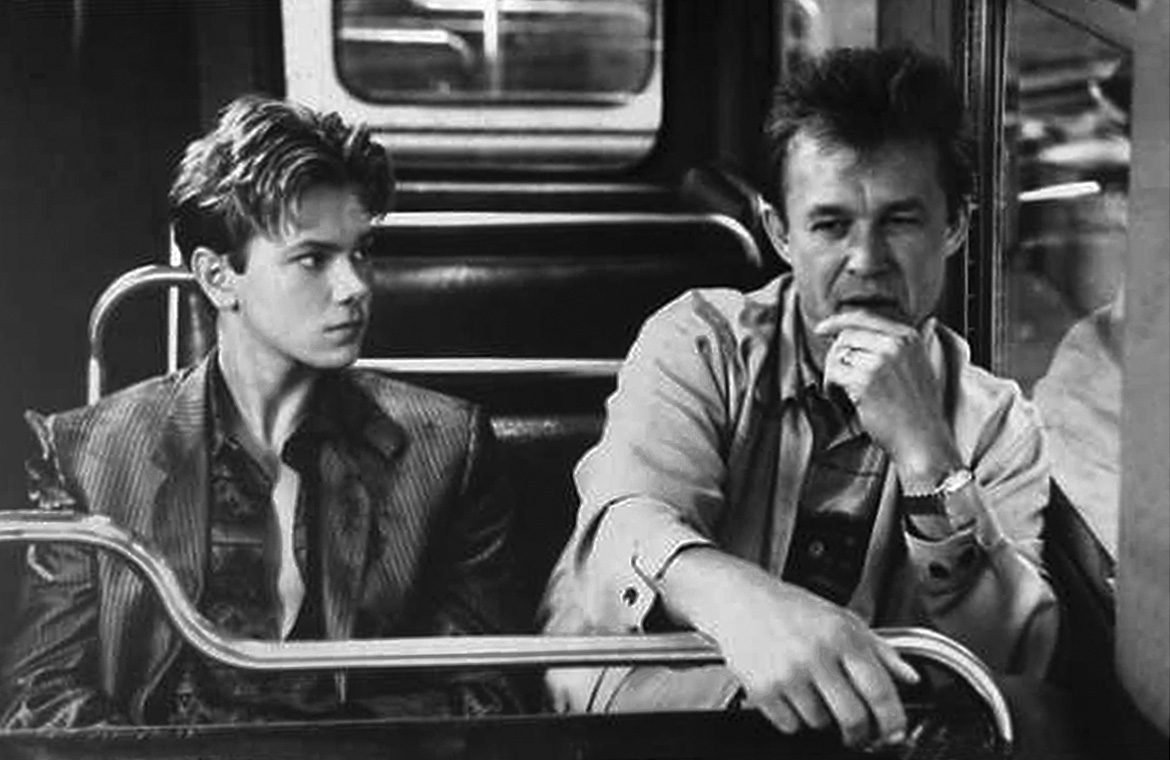 SC: In A NIGHT IN THE LIFE OF JIMMY REARDON, you acted opposite the late River Phoenix. Did the troubled young star make an impression on you? SC: In A NIGHT IN THE LIFE OF JIMMY REARDON, you acted opposite the late River Phoenix. Did the troubled young star make an impression on you?
Koslo: He was a really nice kid. From what I could tell, he was very strong, and he seemed sure of himself -- almost to the point of being a little cocky, maybe? But that's understandable. He was a kid, and he had the world by the tail. He certainly had a lot of talent, and he had a great look. That kid had it all. What a waste.
SC: Being a fan of THE LOSERS, I was thrilled when it showed up on Bruce Willis' television in PULP FICTION.
Koslo: Quentin Tarantino called me at home and asked me to audition for that. At the time, I didn't even know who he was. It turns out he's a fan of mine, and he really likes THE LOSERS. I auditioned for him, but wasn't cast. As a tribute and a nice gesture, though, he put in some footage from THE LOSERS, and as a result, I receive residuals for that. I hope to work with him on another project sometime.
SC: What's your next project?
Koslo: I'm working now on a very interesting film, as a producer and as an actor, called GHOST DANCING, by David Chisholm. I'm also in the new Jean-Claude Van Damme movie, INFERNO (1999), which is sort of a cross between HIGH PLAINS DRIFTER and FARGO. From what I hear, everybody is really pleased with it. There was an industry screening of the rough cut not long ago, and people were impressed with Van Damme's acting. [laughs] He's added a second dimension, apparently.
SC: Does it bother you that you're mostly known for character roles?
Koslo: Not really. In fact, during a syndicated college radio interview -- I think when I was doing LOLLY MADONNA XXX (1973) -- somebody asked me if my goal was to be a big star, and I said, "Only if I can be the biggest star that ever lived." It hurts too much. To hurt that much, you may as well become the biggest -- and who can guarantee you that? I said that 25 years ago, and I still feel that way. It's lonely at the top -- well, it's lonely at the bottom, too! [laughs] But to be at the top, you have to have some kind of compensation, and I'm sure that's why some of these guys are getting $25 million a picture. The celluloid sucks out your soul. Hollywood makes you forget about everybody but yourself, and that's pretty shitty. Movies shouldn't be the most important thing in a person's life, but to an actor, they're very important. I take my work very seriously, and I'm fortunate to have been blessed with this career.
© 1999 by Chris Poggiali.
|
|
|